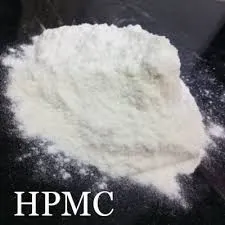
Oct . 11, 2024 11:27 Back to list
hpmc viscosity grades
Understanding HPMC Viscosity Grades A Comprehensive Overview
Hydroxypropyl Methylcellulose (HPMC) is a widely utilized cellulose ether that has found its applications across various industries, including pharmaceuticals, food, cosmetics, and construction. One of the key attributes of HPMC is its viscosity, which can significantly influence its performance in different formulations. This article explores the various viscosity grades of HPMC, their properties, and their applications.
What is HPMC?
HPMC is a non-ionic, water-soluble polymer produced from cellulose. The modification process involves the introduction of hydroxypropyl and methyl groups into the cellulose backbone, enhancing its solubility and properties. HPMC is known for its thickening, binding, film-forming, and emulsifying qualities, making it an essential ingredient in many formulations.
Importance of Viscosity Grades
Viscosity is a critical parameter that characterizes the flow behavior of HPMC solutions. Different grades of HPMC have distinct viscosity levels, which can be classified mainly into low, medium, and high viscosity grades. The viscosity grade determines how the material behaves in a particular application, affecting the texture, stability, and delivery of active ingredients in formulations.
1. Low Viscosity Grades These grades typically have a viscosity range of 100 to 4000 mPa·s (millipascal-seconds). Low viscosity HPMC is often used in applications where a thinner consistency is required, such as in cleaning products, certain pharmaceutical formulations, and food products. Their rapid hydration and ease of dispersion make them ideal for use in high-shear processing environments.
2. Medium Viscosity Grades Falling in the viscosity range of 4000 to 100,000 mPa·s, medium viscosity grades offer a balanced performance suitable for a variety of applications. These grades are often found in cosmetic formulations as thickeners, providing a smooth and creamy consistency without making the product overly viscous. Additionally, they are utilized in modified or sustained-release pharmaceutical formulations where controlled release is desired.
3. High Viscosity Grades These grades possess viscosities greater than 100,000 mPa·s. High viscosity HPMC is preferred in applications where thickening properties are paramount—such as in construction products like tile adhesives and gypsum compounds. The robust thickening feature of high viscosity grades aids in improving adhesion and stability, especially in high-demand applications.
hpmc viscosity grades

Factors Influencing Viscosity
The viscosity of HPMC can be influenced by several factors, including concentration, temperature, and the degree of substitution of the hydroxypropyl and methyl groups. As the concentration of HPMC in solution increases, so does its viscosity. Furthermore, temperature plays a significant role, as higher temperatures generally lead to lower viscosity due to the decreased intermolecular forces. Lastly, the degree of substitution affects the solubility and consequently the viscosity of HPMC in aqueous solutions.
Applications Across Industries
The versatility of HPMC and its viscosity grades makes it a vital ingredient across diverse fields
- Pharmaceuticals In this sector, HPMC is used in drug formulations, film coatings, and as a binder in tablets. Its viscosity grades determine the release profiles of active ingredients, ensuring efficacy. - Food Industry HPMC is commonly employed as a food thickener, stabilizer, and emulsifier. Low and medium viscosity grades are particularly favored for enhancing the texture of sauces, dressings, and dairy products.
- Construction In construction, HPMC is essential in mortars and cement-based products, providing improved workability, adhesion, and water retention.
- Cosmetics In the cosmetic realm, HPMC serves as a thickener and stabilizer in creams, lotions, and gels, where different viscosity grades can create a desired feel and consistency.
Conclusion
HPMC viscosity grades play a crucial role in determining the functionality and performance of this versatile polymer across various industries. Understanding these grades—a complex interplay of concentration, temperature, and substitution factors—helps formulators select the appropriate type for their specific application. As industries continue to innovate, the significance of HPMC's viscosity properties will undoubtedly remain central in the development of new formulations and technologies.
-
Versatile Hpmc Uses in Different Industries
NewsJun.19,2025
-
Redispersible Powder's Role in Enhancing Durability of Construction Products
NewsJun.19,2025
-
Hydroxyethyl Cellulose Applications Driving Green Industrial Processes
NewsJun.19,2025
-
Exploring Different Redispersible Polymer Powder
NewsJun.19,2025
-
Choosing the Right Mortar Bonding Agent
NewsJun.19,2025
-
Applications and Significance of China Hpmc in Modern Industries
NewsJun.19,2025







